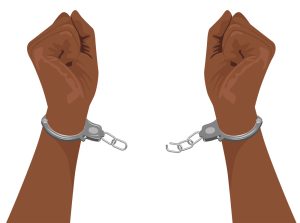Migrant populations are becoming more and more increasing in the West and this has had a large impact on Grief Counseling as well as other forms of mental therapy. Throughout numerous blogs, we have discussed the immigration factor for population groups of Asian, African, and Hispanic groups, but the general and universal need of the immigrant and the acculturation process is a unique process within itself. Whether from Eastern Europe or South East Asia, there are general considerations to take into account for counseling migrants. Of course, for some population groups, the cultural shock and change are far greater as the cultures differ, but there still remains a general shared story for any traveler in a foreign land.

Please also review AIHCP’s multiple behavioral health and counseling certifications for Human Service and Healthcare professionals in the areas of Grief Counseling, Stress Management, Crisis Intervention, Anger Management, Life Coaching and Christian or Spiritual Counseling.
The Immigrant
For a nation that prides itself upon taking upon the world’s ragged and poor, the welcoming arms of the Statue of Liberty has not always been so welcoming. As a nation built upon migrants and the concept of social melting pot, there ironically has existed a counter effort to maintain its Anglo-roots. WASP and Nativist movements have existed within the US since the early 19th Century as an attempt to keep America White, Anglo, Saxon and Protestant. Social agitation to Irish immigration, Italian immigration, Asian immigration and African freedom, as well as discounting of the rights of the original inhabitants, the Native Americans, have always been a priority for these racist groups. Whether in regards to restriction of rights, rewriting history, or national intimidation tactics, the Nativist Movement within the United States has always had a minor audience that wished to keep America Anglo Saxon, or at least European. This has led to countless cases of intimidation and hate against migrants. This was especially true in the 19th Century at the hands of the Know Nothing Party and its attempts to suppress Irish Catholics. Later, the KKK would take up the effort to intimidate not only African Americans recently freed from slavery, but also to all immigrants ranging from Jews and Asians to Catholics and Irish. Unfortunately, even today, the anti-immigration rhetoric is powerful. In 2024, our nation still exhibits racist tactics against migrants at the border as well as against Haitians accused of eating pets in Ohio.
Dehumanizing is the key part of any rhetoric. Hispanics at the border are labeled as cartel thugs, rapists and criminals or Haitians are accused of eating pets. These dehumanizing attempts are part of the play book of the racist. It was done to the Jewish people in Europe and to the African American peoples during slavery. The moment the individual is dehumanized, one is able to rationalize and justify their horrendous activity. Downplaying the migrant is also key in the playbook of the Nativist. Pederson points out that migrant faces various myths that attempt to make them appear as threats to the average American. First, he points out the myth migrants have low education and little skills. On the contrary, most migrants consist of 47 percent of the US. top academic positions within doctorate levels. Secondly, Pederson points out that migrants are painted as threats to taking American jobs. The reality is migrants make up about 15 percent of the American workforce. As for the jobs taken, many are low level entry positions or farming. In fact, migrants make up 75 percent of farming jobs for fruit and vegetables, contributing to 9 billion in federal taxes and 75 billion in earnings. Third, many label migrants as undocumented, but the reality is two-thirds of all migrants are documented. Finally, many push the myth that a stronger border is needed to prevent invasion. This has been suggested due to the terror attacks and security issues but while this is important, most migrants are not a threat and more focus should be to making those who are illegal into becoming legal and productive individuals, especially since so many are actually born here as children or existing on expiring visas (2018, P. 324-325). Again, the Nativist myth that migrants are invaders are the larger myth at play here. Border security is crucial but if the reason is due to fear of migrants, then the wrong emphasis on the wrong security issue is being emphasized to the detriment of a population group. Unfortunately, the Nativist Movement is strong and alive again in the United States and it is something that must be addressed in the future years.
Migrant Issues in the United States
Acculturation varies upon the culture extremes between the country of origin and the host nation but also upon not just the culture but the individual. So again, issues for one, may not exist for another. One cannot in counseling assume one thing exists and another does not but must investigate each individual’s unique situation. With that understood, one can still give a general and likely list of issues that can exist for a migrant during acculturation.

First it is important to note that some migrants are here voluntarily, while others have had no choice. One migrant may arrive for a better life and education or job chances, while others may be fleeing persecution, revolution or famine and disaster (Pederson, 2018, p. 323). Obviously these two extremes present different mindsets when counseling a migrant. Hence the refugee migrant will have a far more traumatic experience than someone who has travelled to the United States or the West for opportunity. The refugee faces various cases of potential PTSD, subjugation to relocation, detention facilities, lost family members as well as trying to adjust to a new culture, language and basic survival itself (Pederson, 2018, p. 326). Some prior to arrival to the United States may have been tortured, abused, raped, falsely imprisoned or during time in refugee camps faced unclean sanitary conditions resulting in health issues and malnutrition (Pederson, 2018, p. 326). Some may also experience survivors guilt issues along with PTSD.
Merely the psychosocial adjustment for forced migrant or voluntary migrant is difficult. New schooling, or new jobs or new homes can all take time to adjust for anyone. Merely relocate to another house across town and one is merely stressed, much less moving from an entirely different culture and nation to a new and foreign place. The first 1 to 2 years constitute a crucial period for migrants as they attempt to find a foundation in life with basic survival (Pederson, 2018. p. 329). This involves finding stable income and food, housing and jobs. Many migrants who are refugees do no have the luxury as well as those who immigrated voluntarily to choose a destination.
During acculturation, migrants will experience the phenomenon of culture shock. Some may integrate, others may not, others may gradually adjust, but the stresses of one culture clashing with another can have big affects on the individual as well as one’s family dynamics. Pederson lists four phases that exist within culture shock. The first is likened to a tourist who sees different and new things about a place and finds excitement regarding the differences. The second phase can be a turning point, where the individual becomes dissatisfied or even disorientated to the change. The third phase involves adjustment or re-orientation. Finally, one reflects a degree of adaptation in managing cross cultural transitions (2018, p. 306-307). Culture shock itself can manifest also in various physical ailments such as headaches, cognitive impairment, stomach issues, reduced energy and fatigue (Pederson, 2018, p. 307). Mentally, it can lead to anxiety, depression and overall stress (Pederson, 2018. p. 307). Culture shock is a big part of acculturation depending on the culture and the person. It is in essence an objective and subjective balance that varies from person to person, yet it is something that many migrants face due language barriers, challenges within the family due to external pressures, and racism within the host nation.
Counseling the Migrant
Whether a international student, a refugee, forced or chosen visitor, the migrant faces issues that sometimes are dismissed from the behavioral and mental health aspect. Many migrants do not understand or wish to partake in the mental health services available due to cultural differences regarding counseling and expressions. Pederson points out that many migrants will first seek what is comfortable and familiar to them when facing emotional issues. Many turn to traditional forms of medication or services from their home culture. In addition, many migrants feel the Western system of care is incapable of addressing their issues due to cultural barriers. They also feel uncomfortable due to various language barriers that can make it difficult to communicate issues. Finally, many are unable to find locations where services are provided due to their relocation itself (2018, p. 328-329).

Due to the wide variety of migrant cultures, counselors are called to multicultural proficiencies and practices (Pederson, 2018. p. 336). In helping migrants, there is a multi model phased process to help migrant clients. The first phase should involve education regarding mental health practices and interventions. This will help eliminate any misconceived notions about the process and help the client and migrant understand the process. Many cultures may have different ways of expressing and discussing issues. This is why it is so pivotal to address how mental health works, however this does not mean the client’s cultural ideas and methods of healing are dismissed. Within the second phase, traditional healing and other cultural aspects are taken into account. The counselor learns and understands how the migrant from a particular culture expresses and migrant’s needs of family or traditional healing methods. In the third phase, counselors help migrants regain cultural empowerment within their environment. This not only involves discussing mental issues with the migrants, but also focusing on daily issues and helping the migrant find services that meet everyday needs. It is sometimes critical to focus on helping stabilize the migrant’s daily life before helping the migrant with his/her mental issues. Part of this not only involves discussing daily problems but also addressing issues of racism and micro aggressions. The final phase, it not only final, but also incorporated throughout the counseling process. This phase involves the counselor as acting as a social advocate and as one pushing for basic human rights of the migrant (Pederson, 2018, p. 337-339).
Hence, counselors are not only helping migrants with grief, loss, relocation, but also a host of other adjustments that occur within the transitional period. Many of the issues related to the immigration can sometimes become secondary to the new acculturation process itself. The numerous stressors to change of environment can become overbearing to anyone, much less someone who may be fleeing a war torn nation. Hence counseling migrants presents a whole new level of complications than the basic citizen.
Grief Counselors may be working on the pain and loss of home, family and way of life with a migrant, but also have to deal with an array of stressors arising from the acculturation process and its many demands. This can lead to complications within grief as well. In fact, many migrants may be dealing with traumatic grief itself.
Conclusion
Migrants face a unique challenge than other target groups. First, they are not born within the host nation and face a more drastic change and acculturation process. Second, they face greater discrimination and third, many are refugees and are forced into relocation due to famine, disaster or war. Many face mental issues from the relocation and in addition face acculturation issues in the host nation. Grief Counselors, Licensed Counselors, Social Workers or pastors need to understand not only the culture of origin but also the general pain of the migrant. There obviously will be objective and subjective elements to each story, but counseling is definitely needed for many migrants who have faced atrocity and now face new discriminations within the host nation. Unfortunately for many migrants, counseling can be a difficult process due to cultural differences, language and lack of access to it.
Please also review AIHCP’s multiple behavioral health certifications, especially, the Grief Counseling Certification. The program is online and independent study and open to qualified professionals in both behavioral health as well as healthcare itself. Please review and see if the Grief Counseling Program meets your academic and professional goals.
Reference
Pederson, P. et. al. (2018). “Counseling Across Cultures”. Cengage
Additional Resources
Line, A. (2022). “Considerations When Counseling Immigrants and Refugees” NBCC. Access here
Hodges, H. (2020). “Going To Therapy Can Be Hard, Especially For Immigrants — Here’s How To Start”. NPR. Access here
Tan. J. & Allen, C. (2021). “Cultural Considerations in Caring for Refugees and Immigrants”. National Library of Medicine. Access here
Moncrieffe, M. (2023). “Specialized care for immigrants experiencing trauma is vital. Psychologists are breaking down the mental health barriers”. APA. Access here

















